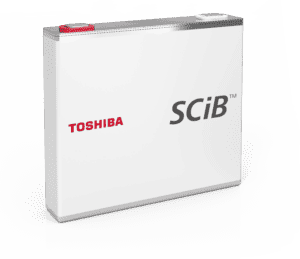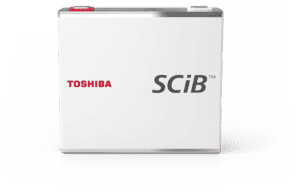With the net zero transition in full swing, more and more businesses are searching for solutions to decarbonise their operations. While a difficult transformation for many companies, one of the most effective methods of reducing emissions is by making the switch to electrified vehicles.
For some sectors, like public transport, it could have a significant impact. Consider the sheer size of public transport fleets. How many buses, trains, trams, and ferries operate daily within Australian cities? Extrapolate this out to densely populated countries like Japan, or major cities across the European continent, and we can see massive potential for electrification. These public transport systems operate 24 hours a day, 365 days a year. By shifting from existing vehicles to an electrified fleet, either full or hybrid models, governments and vehicle manufacturers can take a big step towards industry decarbonisation.
But just opting for battery-powered vehicles won’t make the difference. It’s the type of battery used that will deliver the necessary results.
Public transportation vehicles run multiple times within a 24-hour period, in varied weather conditions, transporting hundreds or thousands of people daily. So the batteries need to be reliable. They need to be uncompromisingly safe. And they need to have a long lifespan to ensure a lower total cost of ownership over time.

Toshiba’s SCiB™ technology is capable of delivering the power, performance, and potential for electrified public transportation
Toshiba SCiBTM technology utilises an innovative chemistry in its cells. Compared to a conventional lithium-ion battery, it utilises a lithium titanium oxide (LTO) in its anode. This chemistry has a number of important benefits which makes it ideal for use in large-scale public transportation.
Improved safety
The innovative chemistry used in SCiBTM technology delivers a safer battery solution. LTO material is far more robust than conventional lithium ion. If the battery cells are damaged—such as puncture or crushing from an external force—the anode material transitions from a conductive phase to a high resistance phase, limiting the energy flow and, with it, any potential for short circuits or fires.
Longer lifetime
Decarbonisation efforts are stifled if the batteries being used only operate for a short period. SCiBTM technology solves this problem, featuring an extremely long usable lifespan of over 20,000 cycles of charging and discharging. Even after 20,000 cycles the cells still operate at 80 per cent. You get more use per battery cell, meaning fewer repairs, replacements, and far less waste.
Ultra-rapid charging
In a hypothetical situation, a typical lithium-ion battery might take four hours to fully charge, while providing four hours of run time. SCiBTM cells leave these batteries in the dust, achieving an 80 per cent charge in just six minutes. This means that buses, ferries, and trains require far less downtime to charge their cells, meaning more uptime, allowing for reduced fleet numbers.
High input/output
Compared to traditional lithium-ion batteries, SCiB™ cells can be charged and discharged at high current. This allows them to achieve high power in a short amount of time. The cells can store a large amount of regenerative power produced by vehicles like trains or buses, where energy is recouped through either downhill gravitational energy, or when the brake is applied. Having a rapid charging battery is the only way to make use of this energy, otherwise it goes to waste.
Larger operational temperature span
We’re lucky here in Australia. While we may face long, hot summers, we don’t typically face sub-zero temperatures. But other parts of the world do—regularly. SCiB™ cells are designed to face these vast changes in temperature. Thanks to their chemistry, even when charged at low temperature, the metal lithium doesn’t precipitate. SCiB™ can be charged and discharged repeatedly at temperatures as low as -30°C, and remain usable up to 45°C, making them extremely versatile both in metro and rural areas.
High depth of discharge
While public transport routes typically wouldn’t require a vehicle to discharge anywhere close to 100 per cent of their battery power, it’s still a concern. Where conventional batteries typically have a limited useful range, SCiB™ batteries can be used to their full range of capacity, right up to 0 per cent discharge.
Given these benefits, SCiB™ technology is the obvious choice for electrification of public transportation vehicles.
And it’s already happening.


SCiB™ technology is already powering public transport fleets all over the world
Hybrid bus fleets
It’s already in use in a range of hybrid bus solutions. Van Hool’s Exqui.City hybrid tram bus uses SCiB™, and is currently deployed in over 10 European cities. SCiB™ technology empowers the buses to make the most of regenerative energy converted from their kinetic energy, allowing the vehicle’s electric motor to be powered by this regenerated energy. This supports the buses to start moving smoothly at high power. Then, while the engine is turned off during stopping, the energy is also used as the power source of the air conditioner and other devices.
This serves to lower emissions and boost fuel economy, without the need to opt for a 100 per cent battery-powered fleet.
Electric buses
SCiB™ technology has already been adopted by bus companies in Europe and Japan to power their fully electric buses.
Solaris Bus & Coach S.A utilises SCiB™ technology for its Urbino Electric bus. Chosen for its fast-charging properties, SCiB™ has been rolled out in their buses operating in Hanover, Hamburg, Barcelona, and Tampere (Finland). This has allowed these cities to access quiet, emission-free public transport, and work towards decarbonisation of their entire fleet, while promoting zero-emission urban transportation.
A number of prominent companies in Japan have been using SCiB™ technology for a number of years now, too.
In Kawasaki, Tokyo, Kawasaki Tsurumi Rinko Bus Co., Ltd. has been operating an electric bus service since 2015, on a route between Kawasaki Station and the Kawasaki Municipal Hospital. Powered by SCiB™, the bus makes fifteen 2.4-km round trips every day between the station and the hospital.
In Iwate, Northern Iwate Transportation Inc. has deployed an electric bus solution since 2012. The electric bus makes four 12km round trips daily between Miyako Station and Jodogahama, in a national park—meaning it was the ideal route candidate for zero-emission transport.
Rail is a strong contender
While we typically think of cars and buses as the central focus of electrification, SCiB™ technology is already operational in trains—and delivering big changes in safety, reliability, and emission outputs.
In Japan, SCiB™ technology is used in the hybrid propulsion system for Twilight Express Mizukaze, a luxury sleeper train service delivered by West Japan Railway Company. In operation since 2017, the train is driven by electric power that’s generated by a diesel engine and assisted by SCiB™. During braking, the regenerative energy is stored in the SCiB™ cells used later for motor assist during acceleration.
In the heart of Tokyo, on the Tokyo Metro Ginza Line, which includes the bustling Shibuya ward, Tokyo Metro Co., Ltd. has installed a SCiB™ battery storage system as an emergency backup system in the event of power loss, demonstrating their trust in the capabilities of the battery technology.
SCiB™ has even been adopted in Japan’s famous Shinkansen. Installed in the N700S series, it’s the world’s first high-speed train equipped with a self-propelled battery system. This ensures that in the event of power outages, the system will allow the train to continue to a safe place for passenger evacuation under its own power.
In Europe, SCiB™ technology has been deployed by Siemens AG for its Mireo railway system. Here, SCiB™ is used as the main traction power source. This allows them to achieve not only zero emissions for regional traffic, but also delivering robust safety measures and the long life system required for railway systems.
SCiB™ on the water
It’s not just land-based vehicles that are seeing benefits of electrification.
SCiB™ has been adopted by Damen Shipyards in the Netherlands, and is used as the power source for their electric ferry model, 2306E3. The battery system has acquired the DNV-GL standard of the ship certification body, which means it reduces typical ship pollution while delivering a highly reliable power system.
While the technology isn’t in widespread use for ferries yet, its capabilities—particularly when it comes to rapid charging, and wide temperature ranges—are sure to be realised. 

Decarbonisation begins with the right technology
While there may be hesitation to pull the trigger on a fully electric fleet, the benefits for decarbonisation are clear. However, it’s unlikely to happen in big sweeping changes; instead, we’ll see single-route electrification like in Kawasaki, Iwate, or the Siemens Mireo rail system.
But by choosing a safer, more efficient, long-life, and rapid-charging battery solution like SCiB™, companies and cities are planting the seeds for long-term change.
This sponsored editorial is brought to you by Toshiba. For more information, visit here.










